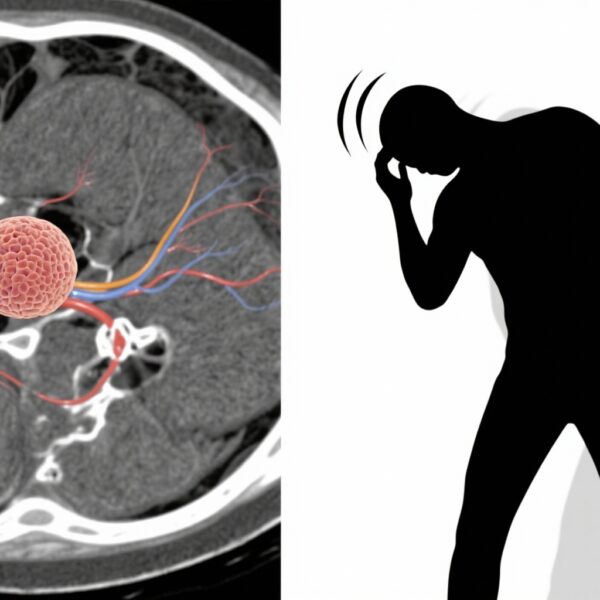Highlight
- Neither hypertonic saline nor carbocisteine significantly reduced pulmonary exacerbations over one year in bronchiectasis patients.
- No differences were observed in disease-specific quality of life or time to next exacerbation among treatment groups.
- The large, open-label UK trial excluded smokers and recent mucoactive users, reflecting routine clinical populations.
- Adverse event rates, including serious adverse events, were comparable across intervention and control groups, supporting safety profiles.
Study Background and Disease Burden
Bronchiectasis, a chronic respiratory condition characterized by irreversible bronchial dilation and frequent mucous production, imposes a significant health burden worldwide. Patients experience persistent cough, sputum production, recurrent infections, and exacerbations leading to hospitalizations and reduced quality of life. Unlike cystic fibrosis–related bronchiectasis, the non-cystic fibrosis subtype represents a heterogeneous patient population with variable etiologies and clinical courses. Mucoactive agents such as hypertonic saline and carbocisteine have been employed to facilitate mucous clearance; however, clinical guidelines diverge on their recommendation due to inconsistent evidence. Regional treatment patterns reveal variation in mucoactive use, but large-scale, rigorous trials assessing their efficacy and safety in non-cystic fibrosis bronchiectasis have been lacking. This unmet clinical need justified the design and execution of the CLEAR trial, aiming to clarify the role of these agents in reducing pulmonary exacerbations and improving patient outcomes.
Study Design
The CLEAR (Clinical Efficacy of hypertonic saline and Carbocisteine in Bronchiectasis) trial was an open-label, randomized, two-by-two factorial study conducted across 20 UK sites. It enrolled 288 adults with confirmed non-cystic fibrosis bronchiectasis who experienced frequent pulmonary exacerbations and daily sputum production. Exclusion criteria included current smoking and recent use of mucoactive treatments to minimize confounding. All patients continued standard care; meanwhile, participants were randomized to one of four arms: hypertonic saline alone, carbocisteine alone, both agents in combination, or standard care alone. The primary endpoint was the annualized number of adjudicated pulmonary exacerbations requiring treatment over 52 weeks. Secondary outcomes included disease-specific health-related quality-of-life scores, time to next exacerbation, and safety metrics. The factorial design allowed independent comparisons of hypertonic saline versus no hypertonic saline and carbocisteine versus no carbocisteine.
Key Findings
Among the 288 randomized participants, analysis revealed no significant interaction between hypertonic saline and carbocisteine treatments, enabling clear interpretation of each agent’s effect. The mean exacerbation rate was 0.76 (95% CI, 0.58 to 0.95) for patients receiving hypertonic saline, compared with 0.98 (95% CI, 0.78 to 1.19) in those not receiving it, corresponding to an adjusted mean difference of -0.25 (95% CI, -0.57 to 0.07; P = 0.12). For carbocisteine, the mean exacerbation rate was 0.86 (95% CI, 0.66 to 1.06) versus 0.90 (95% CI, 0.70 to 1.09) without carbocisteine, yielding an adjusted difference of -0.04 (95% CI, -0.36 to 0.28; P = 0.81). Neither difference met statistical significance.
Secondary outcomes assessing disease-specific quality of life, measured through validated instruments, showed no meaningful difference between groups. Additionally, the median time to next exacerbation did not differ significantly with either treatment. Safety profiles were comparable; adverse events, including serious adverse events, occurred with similar frequency across all arms, confirming the tolerability of both hypertonic saline and carbocisteine in this population.
Expert Commentary
The CLEAR trial provides the most definitive evidence to date regarding the mucoactive therapies hypertonic saline and carbocisteine in non-cystic fibrosis bronchiectasis. While earlier smaller studies or observational data suggested potential benefits, this large, randomized, factorial design trial failed to demonstrate clinically significant reductions in exacerbation frequency or meaningful quality of life improvements. This finding aligns with the inconsistency observed in global guidelines, emphasizing the complexity of managing bronchiectasis and challenges in mucociliary clearance enhancement.
Potential limitations include the open-label design, which might influence patient-reported outcomes, although objective exacerbation adjudication mitigates bias. The exclusion of current smokers and recent mucoactive users restricts generalizability somewhat but increases internal validity. Mechanistically, hypertonic saline is thought to hydrate airway secretions and improve mucociliary clearance, while carbocisteine modulates mucin composition and viscoelasticity. The absence of demonstrated clinical effect suggests that these mechanisms may not sufficiently alter disease progression or exacerbation triggers in this patient group.
Future investigations might focus on identifying subpopulations with specific pathophysiological profiles who could benefit from mucolytic therapies or combining mucoactive agents with other therapeutic modalities. Moreover, exploring biomarkers predictive of response may refine personalized treatment strategies.
Conclusion
In summary, the CLEAR trial establishes that administration of hypertonic saline or carbocisteine, alone or in combination, does not significantly reduce pulmonary exacerbation rates or improve health-related quality of life over one year in patients with non-cystic fibrosis bronchiectasis. The treatments were safe and well-tolerated but showed no clear clinical advantage over standard care. These results advise caution in routine use of these mucoactive agents for exacerbation prevention in bronchiectasis, reinforcing the need for further research to identify effective interventions and customize patient care.
References
Bradley JM, O’Neill B, McAuley DF, Chalmers JD, De Soyza A, Hill AT, Carroll M, et al; CLEAR Investigator Team. Hypertonic Saline or Carbocisteine in Bronchiectasis. N Engl J Med. 2025 Sep 28. doi: 10.1056/NEJMoa2510095. Epub ahead of print. PMID: 41020514.
Additional relevant literature on bronchiectasis management and mucoactive agents can be consulted through current respiratory disease guidelines, including those from the British Thoracic Society and European Respiratory Society.



